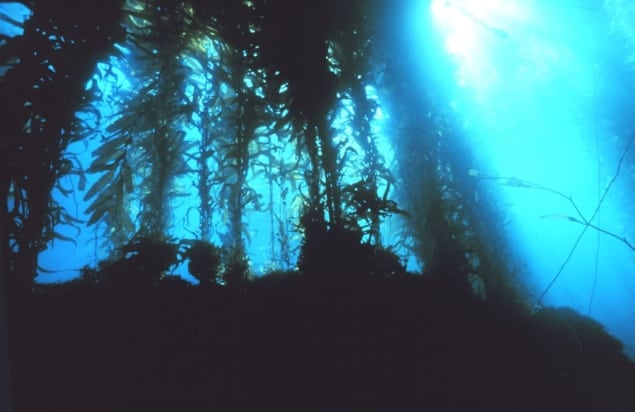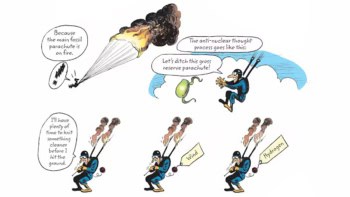
The kelp forests – those towering submarine tangles of brown seaweeds – may not survive the steady change of ocean chemistry.
Australian scientists have identified a risk to the kelp forests of the oceans, a new way in which carbon dioxide can change the world. Ever more acidic oceans could encourage weedy submarine grasslands to replace the rich habitats of the coastal kelp forests.
Although most climate change forecasts are based on computer simulation, this one has been tested in the real world. The scientists used natural volcanic seeps rich in carbon dioxide to observe the changes to sea floor ecosystems as water chemistry changes with greater levels of dissolved carbon dioxide.
“Carbon emissions might boost plant life in the oceans, but not all plant life will benefit equally,” said Sean Connell, of the Environment Institute at the University of Adelaide.
“Weedy species are quicker to capitalise on nutrients, such as carbon, and can grow faster than their natural predators can consume them.
Weedy turf wins
“Unfortunately, the carbon dioxide that humans are pumping into the atmosphere by burning fossil fuels gets absorbed by the ocean and favours weedy turfs, which replace kelp forests that support higher coastal productivity and biodiversity.”
He and colleagues from Australia, the US, New Zealand, Italy and Hong Kong report in the journal Ecology that they made a series of samples of submarine plant growth at natural volcanic vents in New Zealand’s Bay of Plenty: they looked at rocky reefs on which grew a mosaic of kelp and turf algae, along barren stretches grazed by sea urchins and a native New Zealand mollusc.
They chose the sites because the levels of carbon dioxide – and therefore the measures of acidity – in the water were roughly what climate scientists would predict for the end of this century, if humans go on releasing greenhouse gases.
They found that ecosystems changed with shifts in water chemistry. “While elevated carbon dioxide caused some weeds to be eaten in greater amounts, the dominant sea urchin predator ate these weeds at reduced amounts. This enabled the weeds to escape their natural controls and expand across coasts near the elevated carbon dioxide,” Connell said.
The slow but inexorable changes in ocean acidity will have inevitable consequences for coastal protection offered by natural ecosystems. Kelp forests provide habitat or nourishment for seals, sea otters, sea lions, whales, cormorants, gulls, terns and shore birds as well as fish. There is evidence that warming has already damaged some of Australia’s kelp forests.
Researchers have been issuing such warnings for years: among them Professor Connell and his co-author from Adelaide, Ivan Nagelkerken, who, three years ago, surveyed 632 scientific studies of a huge range of marine habitats to conclude that the overall effect of acidification was to impoverish ocean life.
“Under the level of acidification we will find in the oceans in a few decades, marine life is likely to be dominated by fast-growing and opportunistic species at the expense of longer-lived species with specialist lifestyles, unless we set some change in place,” said Nagelkerken.
“We need to consider how natural enemies might be managed so that those weedy species are kept under control.”
- This report was first published at Climate News Network.



